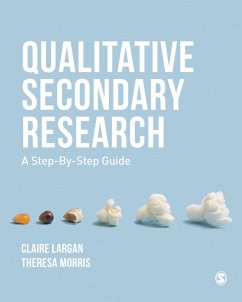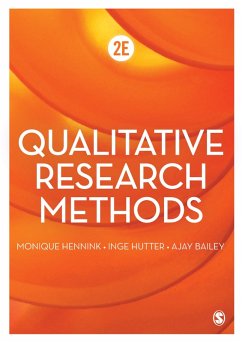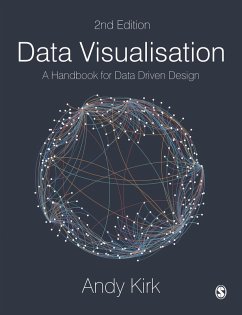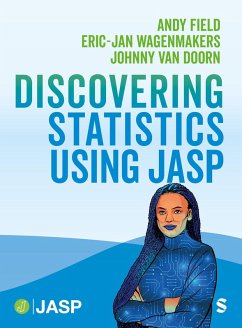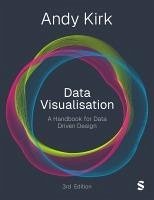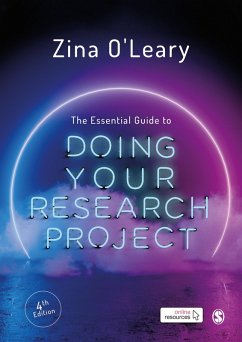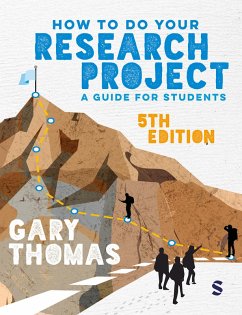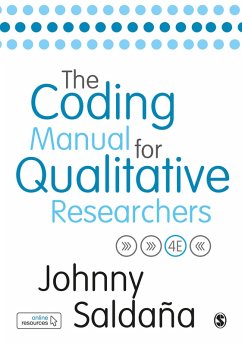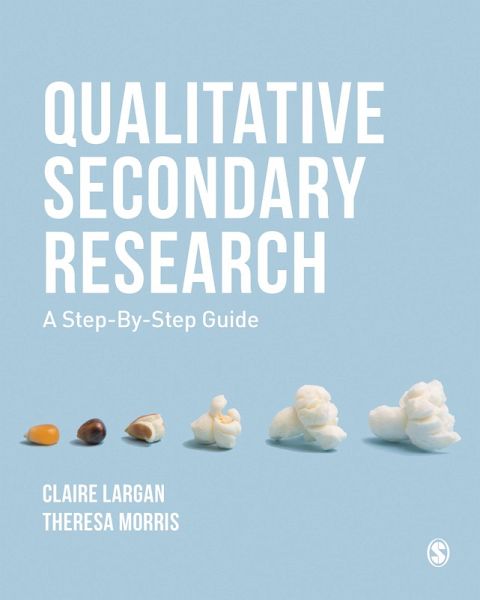
Qualitative Secondary Research (eBook, PDF)
A Step-By-Step Guide
Versandkostenfrei!
Sofort per Download lieferbar
34,95 €
inkl. MwSt.
Weitere Ausgaben:

PAYBACK Punkte
17 °P sammeln!
Using secondary data offers unique opportunities and challenges. This practical book will guide you through finding, managing and analysing qualitative secondary data in an error-free way.Perfect for those doing dissertations and research projects, it provides an accessible introduction to the theory of secondary research and sets out the advantages and limitations of using this kind of research. Drawing on years of teaching and research experience, the authors· Offer step-by-step advice on how to use qualitative secondary data · Walk you through each stage of the research process · Provide...
Using secondary data offers unique opportunities and challenges. This practical book will guide you through finding, managing and analysing qualitative secondary data in an error-free way.
Perfect for those doing dissertations and research projects, it provides an accessible introduction to the theory of secondary research and sets out the advantages and limitations of using this kind of research. Drawing on years of teaching and research experience, the authors
· Offer step-by-step advice on how to use qualitative secondary data
· Walk you through each stage of the research process
· Provide practical, ethical tools to help you with your project
· Show you how to avoid the potential pitfalls of using secondary data.
Clear and easy to understand, this book is a ready-made toolkit for successfully using qualitative secondary data. From beginner level and beyond, this no-nonsense guide takes the confusion and worry out of doing a secondary research project.
Perfect for those doing dissertations and research projects, it provides an accessible introduction to the theory of secondary research and sets out the advantages and limitations of using this kind of research. Drawing on years of teaching and research experience, the authors
· Offer step-by-step advice on how to use qualitative secondary data
· Walk you through each stage of the research process
· Provide practical, ethical tools to help you with your project
· Show you how to avoid the potential pitfalls of using secondary data.
Clear and easy to understand, this book is a ready-made toolkit for successfully using qualitative secondary data. From beginner level and beyond, this no-nonsense guide takes the confusion and worry out of doing a secondary research project.
Dieser Download kann aus rechtlichen Gründen nur mit Rechnungsadresse in A, D ausgeliefert werden.




